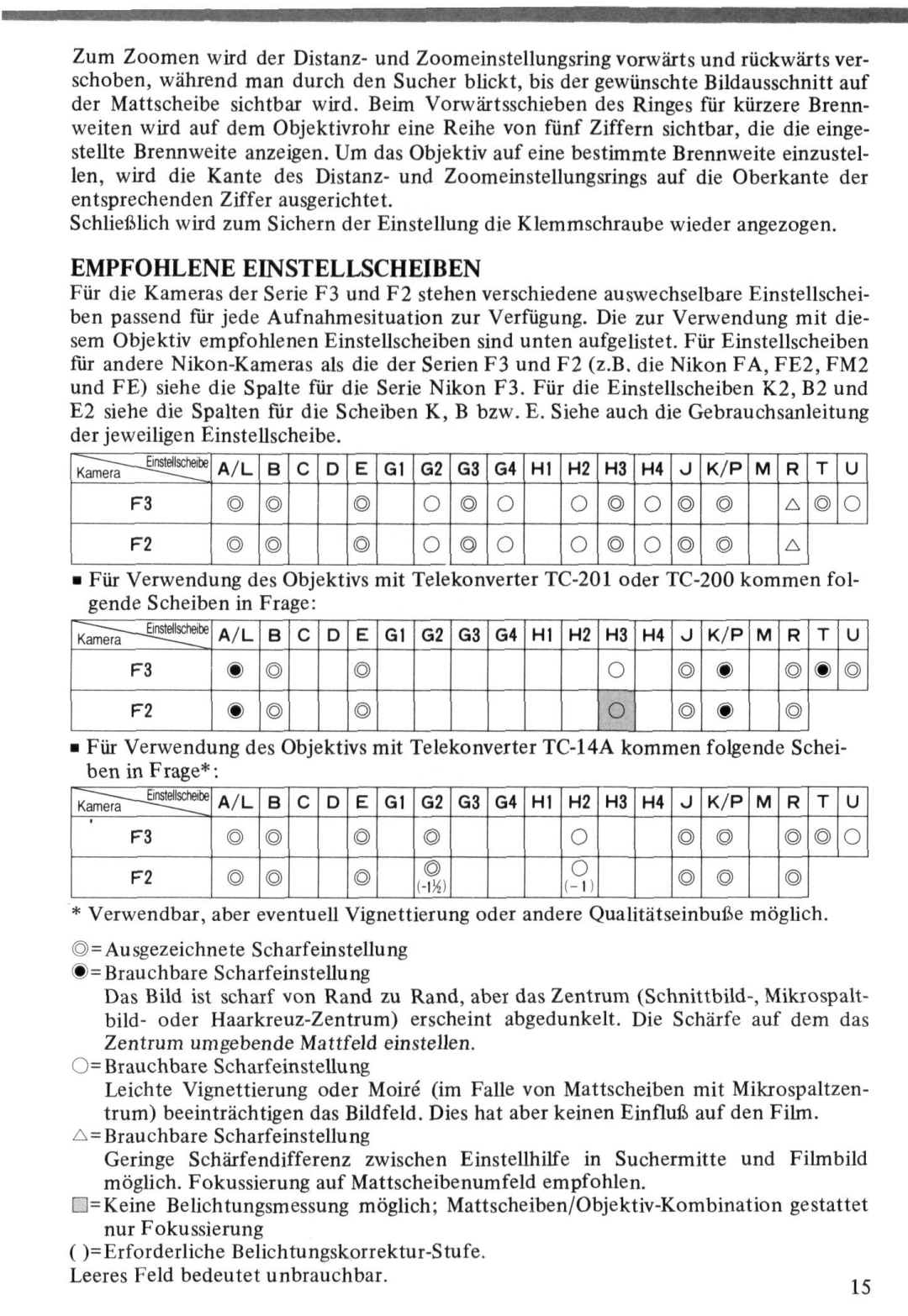Zoom-Nikkor ED 80-200mm f/2.8 specifications
The Nikon Zoom-Nikkor ED 80-200mm f/2.8 is a professional-grade telephoto zoom lens that has garnered acclaim among photographers for its impressive optical performance and build quality. This lens is particularly favored for portrait, wedding, and wildlife photography, where versatility and image quality are paramount.One of the standout features of the lens is its constant maximum aperture of f/2.8 throughout the zoom range. This capability allows photographers to shoot in low-light conditions and achieve a beautifully shallow depth of field, ensuring subjects are sharp and backgrounds are softly rendered. The fast aperture also facilitates faster shutter speeds, reducing the risk of motion blur, making it an excellent tool for action shots.
The lens incorporates Extra-low Dispersion (ED) glass elements, which help to minimize chromatic aberrations and achieve high contrast and sharp images even at wide apertures. These ED elements work in conjunction with multiple multi-coated surfaces that enhance light transmission and reduce flare, providing outstanding image quality across a variety of shooting situations.
In terms of construction, the Nikon Zoom-Nikkor ED 80-200mm f/2.8 features a robust and durable design, built to withstand the rigors of professional use. The lens barrel is made of high-quality materials that provide resistance to dust and moisture, ensuring reliability even in challenging environments. This makes it a favorite among photographers working in unpredictable weather.
Focusing is another strong point of this lens, with a fast and accurate internal focusing system that allows for quick adjustments without altering the lens's physical length. This contributes to its overall balance and handling, especially important during extended shooting sessions. The lens is compatible with Nikon's autofocus systems, including both standard and professional models, further enhancing its versatility.
The Nikon Zoom-Nikkor ED 80-200mm f/2.8 also features a 9-blade diaphragm which contributes to beautiful bokeh, making out-of-focus areas aesthetically pleasing and adding an artistic touch to images. The lens accepts 77mm filters, allowing photographers to further enhance their shooting techniques by utilizing polarizers, ND filters, and more.
In conclusion, the Nikon Zoom-Nikkor ED 80-200mm f/2.8 is a powerhouse lens celebrated for its exceptional optical performance, fast aperture, and durable construction. Whether used for professional portraits, sports photography, or wildlife shots, this lens consistently delivers stunning image quality that meets the demands of discerning photographers. Its combination of advanced technologies and user-friendly features solidifies its position as a go-to choice for both amateurs and professionals alike.

